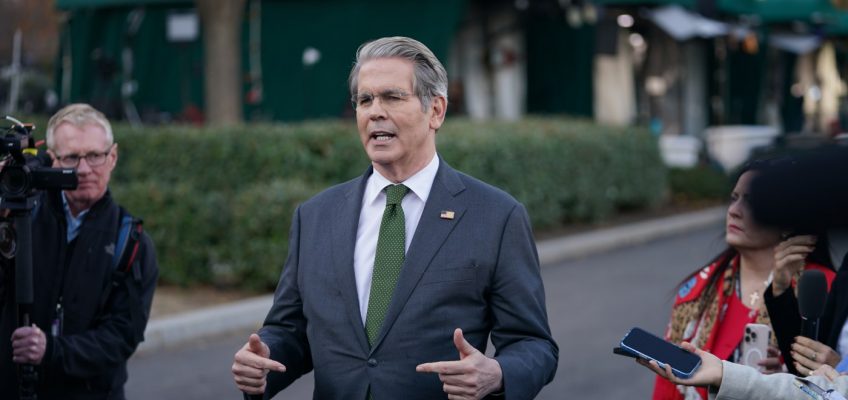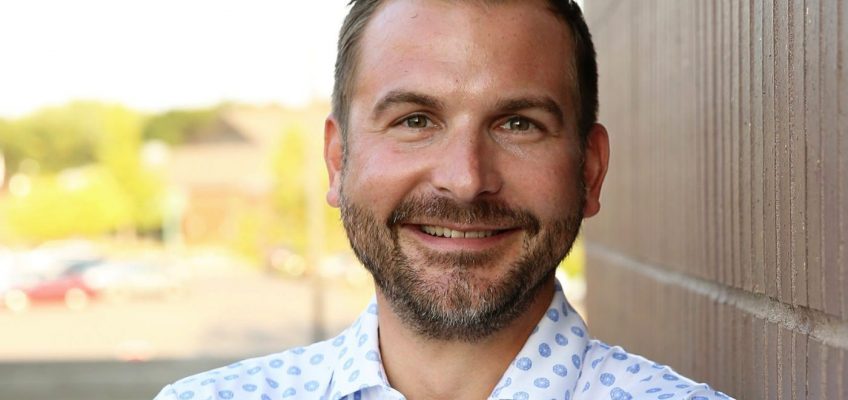Former Minneapolis Regional Chamber of Commerce President and CEO Jonathan Weinhagen admitted in federal court Monday to defrauding the organization of more than $213,000 through a multi-year scheme that included concocting a phony consulting company, writing a sham obituary and stealing chamber donations for a Crime Stoppers reward fund.
Weinhagen, who had an earlier stint with the St. Paul Area Chamber of Commerce, entered a guilty plea in U.S. District Court in St. Paul to one count of mail fraud in connection with receiving three $10,000 donations to Crime Stoppers following the unsolved shootings of three children in Minneapolis in 2021.
Jonathan Weinhagen (Courtesy photo)
Weinhangen, a 42-year-old married father of four from Shoreview, was indicted in late October for running the fraud scheme between December 2019 and June 2024 — when he abruptly left the Minneapolis chamber — by setting up bogus contracts with the made-up company. He deposited money from the contracts into a bank account he opened under the company’s name and used it for his personal expenses.
Four other charges will be dismissed at sentencing as part of a plea agreement: two counts of wire fraud and one count each of attempted bank fraud and providing a false statement on a loan application.
Weinhagen will remain free ahead of his sentencing on an unsecured bond he posted Oct. 23. He faces between 27 and 33 months in prison at sentencing, which has yet to be scheduled.
‘James Sullivan’
Weinhagen admitted Monday during questioning by Assistant U.S. Attorney Matthew Murphy that he invented a company called Synergy Partners along with a fictional owner, James Sullivan, which he used to enter into three fraudulent contracts with the chamber totaling $117,500.
He admitted to opening a line of credit in the chamber’s name, borrowing more than $125,000 and transferring it to the phony company.
“To cover up his embezzlement,” the indictment read, “Weinhagen later diverted donations from Chamber of Commerce business members to repay the money he fraudulently obtained through the (chamber) line of credit.” Weinhagen admitted as much under questioning by Murphy.
The chamber discovered the credit line and staff requested information about the payments, according to the indictment. Weinhagen then sent fake emails to make it appear the fictional company had gone out of business and published an obituary on Legacy.com in April 2024, claiming the 62-year-old owner from St. Paul had died of pancreatic cancer.
“James Sullivan” was a “family man who balanced a successful consulting career,” the now-deleted obituary read. “Jim was charismatic, hardworking, and always put others first.”
Weinhagen admitted in court to spending $15,701 on a chamber credit card for a first-class airfare and a two-bedroom oceanfront room in Honolulu for him and family, and creating fake documents to make it appear as though the trip was all for legitimate chamber business.
Weinhagen admitted he asked Crime Stoppers to return the $30,000 in May 2022 and asked that the refund be sent to his home, saying it was the chamber’s new address.
“And upon receiving that check, you stole the money for your own personal expenses. Is that correct?” Murphy asked Weinhagen. “Yes,” he said.
Finally, Weinhagen admitted that he tried to defraud SoFi Bank of $54,000 through a bank loan after leaving the chamber. He claimed he worked for a Minnesota-based restaurant holding company and providing a phony bank stub showing a $425,000 annual salary. The bank denied the loan.
He was a school board member
In a span of about seven years, Weinhagen went from working at his family’s now-shuttered fourth generation business on St. Paul’s West Side, Weinhagen Tire Co., to hobnobbing with business leaders and politicians on both sides of the river.
Weinhagen, who holds degrees from Bethel University and the University of Minnesota’s Humphrey School of Public Affairs, joined the St. Paul Area Chamber of Commerce in 2010. He spent the next six and a half years at the chamber, including the last two as vice president, then left to become president and CEO of the Minneapolis Regional Chamber of Commerce.
A look at St. Paul’s legal tangles with the Trump administration
Plymouth man sentenced to prison for Anoka drunk driving fatality
Former Minneapolis teacher and coach sentenced to life in prison for sexually assaulting children
Campbell’s IT chief on leave after lawsuit claims he said company’s food is for ‘poor people’
Minnesota, other states reach $7M settlement in rent-fixing case against major apartment manager in U.S.
Weinhagen resigned from the Minneapolis chamber following an internal investigation that projected a $500,000 deficit in 2024. He received nearly $278,000 in salary and other compensation in 2023, according to chamber tax records.
Weinhagen was also a member of the Mounds View school board for over 11 years. He resigned on Oct. 24, two days after the federal indictment was unsealed.
The school district found no evidence of impropriety in its routine audits, spokesman Colin Sokolowski said Monday. But the school board has asked the district’s auditing firm “to review our finances for the duration of Weinhagen’s board service,” Sokolowski said, adding the review is ongoing.




